Chola Makeup
An exercise in becoming
With their dark lipstick, vicious eyeliner and big permed hair, the chola girls at my school were by far the most iconic and fierce. Their look, an integral part of their whole attitude, represented something I still worship in women: the ability to simultaneously be gorgeous and scare the shit out of people. As a scrawny half-Mexican twelve-year-old, it was something to aspire to.
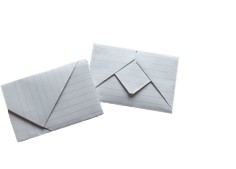
I was nearly there, maybe. My chola friends had already given me a nickname (the misspelled Flacka). When we weren’t ditching school together and tagging walls, we were passing notes in class full of gossip and fake calligraphy. It was all very innocent now, but I knew that when I got older I would be expected to fight, prove my worth and get jumped into the gang they were trying to join — an exhilarating prospect that filled me with cold dread. In the meantime, thankfully, the next step was simply to look the part.
That alone was a major undertaking. I didn’t have the look yet and my mom, who’d gone out of her way to avoid run-ins with cholas when she was a teenager, was having none of it. So I started working at it in secret. I got my ears pierced and took to stealing the same cheap maquillaje my chola counterparts wore. I eventually filled a tiny silver bag with pilfered eyeliner, Maybelline mascara, Wet ’n’ Wild #508 lipstick and a Cover Girl pressed powder compact.
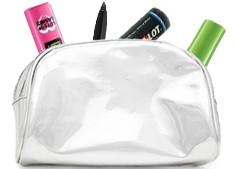
Whether or not I put it on, simply possessing the makeup was an act of independence. Choosing it, stealing it and keeping it secreted away in my locker gave me the thrill of venturing away from boring girlhood and deeper into mysterious woman territory. We would lean over the sink in the girls’ room before first period, putting on our war paint and posing with serious pouts in the mirror. Together we would perform this ritual and roll out late for class in a cute, menacing pack like Mexican Heathers (or La Vida Loca, the film that came out not long after).
In those early days I drew strength from the ritual. I put my faith in it, in us, and in makeup’s power to transform not just my face but my life.

Experimenting with makeup — whether in pursuit of becoming a scary gangster bad ass or merely to seem more attractive — is an effort, a ritualized trying. It’s an exercise in becoming, until the becoming actually happens, if it ever does.
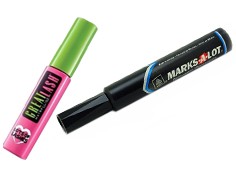
One afternoon we were in the school bathroom. Isabel was bent over the sink, reapplying her eyeliner. She must have read me well because she said to her reflection, “Makeup always looks strange when you first start wearing it.”
I was relieved to hear it. Though it had already been a couple weeks, every time I caught myself in the mirror I did a double take. I looked weird. It didn’t help that the makeup I wore was both cheap and wrong. (You don’t get much choice when “shopping” means going to the grocery store, thumbing through sealed packages that say “honey brown #2” and then furtively shoving one in the pocket of your Dickies.) I’m not much better at it now, but back then it was almost comical how off my selections would be. I would try to counterbalance a too-dark foundation with a too-light powder and then go through half a roll of toilet paper wiping it all off.
What Isabel had said I took to be tantamount to a sisterly confession, an admission that this whole makeup thing was not just an act, but a legitimate one, a process that takes time and takes you somewhere new. It made me see my growing self-estrangement as a rite of passage.
She twisted the cap back on her eyeliner and pulled out another black tube. Leaning into the mirror again, she spelled out in big letters POR VIDA — “for life” — in her signature scrawl.
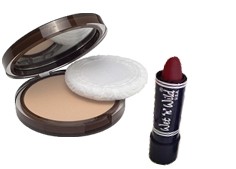
In all rituals, it’s not just the performance but its accouterments that get fetishized. The bright pink mascara tube, the satisfying click of the compact when it snapped shut — these became deeply personal symbols emblematic of my trajectory. Each was precious, talismanic even.
Still I regarded it all with a degree of mistrust. Really, purple lipstick FOR LIFE?
It was full of contradictions, this place I was headed with silver makeup bag in hand. For one, using makeup signaled my independence, yet I knew it was also inherently conformist: it’s what magazines had been pushing on us for years. On the other hand, what I was after was something I’d never seen depicted — hood-era Gwen Stefani notwithstanding. As far as I knew then, cholas and their style only existed in real life, perhaps only right here at my school, the same school my mother had gone to as a young Chicana trying to stay out of trouble. Because I only knew cholas in this gritty real life context, they signified something raw, genuine, subversive. But the most glaring contradiction I returned to again and again was that if I wanted to be fierce and intimidating, wouldn’t a bare-faced female who doesn’t give a shit about makeup or identity or fitting in be the fiercest of all?
The contradictions multiplied when I took to wearing makeup earnestly. It was the first time I realized how much my face could be used to signal something about me to the world. Respect me, I’m tough and I make my own choices, I wanted it to say. But I worried it was saying Look at me, I’m going out of my way to belong to this group. That I worried at all underscored to me, privately, how not-tough I actually was. Being anxious about overcoming my anxiety only served to amplify it and my purple-stained lips seemed to shout it from the rooftops. In these early forays into the semiotics of identity formation, I wrote in big, clumsy letters with indelible marker only to cringe with embarrassment, cross it out, and try again.

In all this, I wasn’t just testing out a look. I was testing out a notion of self. Even when putting on makeup alone, in my mind’s eye were my friends’ faces in the mirror for me to analyze and reverse engineer. Confidence, fearlessness, power — they had it and I desperately wanted it. But where was it? If I can see fierceness in their piercing eyes and harsh mouths, can I draw it onto my own? Is it the way you hold your face, and then it sinks in deeper — like how children are told not to cross their eyes or they’ll stick like that? Or is the source of their strength completely inscrutable and I’m only wasting my time? I had to get closer to find out. It was like some kind of osmosis theory of personality: I felt like if I spent enough time with them some of their essence would rub off on me.
By grace of my cultural background I was afforded friendship with these girls, and the makeup I wore was like a toll I paid in order to maintain access — maquillaje functioning as maquila. This small price allowed me to get closer to these girls and to what I sought in myself. It was all about access — accessing something in me that I wasn’t otherwise sure I’d find. I was too unsure of myself to do it alone, so I went a circuitous route hoping to catch a glimpse of myself through others.
In this way, my friends were my mirror. I didn’t care if I looked ridiculous to myself as long as I looked like they did (or, rather, as long as I thought that they thought I looked like they did). Oddly, the corollary — that I looked less like me — came as a surprise. But it was fine. The transformation was more fascinating than hanging on to whatever the hell “being me” might have meant.
I kept it up for a long time. I didn’t know it, but in that time I was waiting. I wanted to see if the ritual of placing these colors on my face would result in some deeper change. I was waiting to feel ready for the next steps I knew were coming.

In the meantime there were dramas. They were small at first. My resistance to being set up with a particular thuggish vato. The girls shit-talking my homemade dresses, their disapproval of my friendship with white girls who wore Doc Martens. Nothing I couldn’t explain away, but the crack in the mirror was there.
One Sunday I was out with my parents. I was at the age when you start to be embarrassed by them, so it didn’t help that we were at one of those discount supermarkets that smell like old meat. Around the corner came an old lady and with her was Isabel, powerful and glamorous with painted-on eyebrows and everything.
We made eye contact. I was immediately crippled by self-consciousness. I had been seen for what the other half of me was: a bare-faced middle-class suburban kid in cutoff shorts and Converses. In other words, a little white girl. Having my ruddy-faced dad nearby, normally something that made me feel supremely secure, now left me feeling exposed in a way I could not explain.
I panicked at the notion of going to school the next day. Surely she’d seen me, surely she’d rat me out. For what, I wasn’t exactly sure, but I felt I’d violated something fundamental. The next morning I made myself throw up and my mom let me stay home from school. Then I threw up again, from anxiety.
When I came back the next day I was relieved to find that larger dramas had supplanted my own. There was a rumble after school. I watched the fight from afar. A voyeur, I was pleased that it had nothing to do with me.
But eventually it did. Things came to a head one day in the locker room. One of my friends, a misfit white punk with pink hair who wore the same Hole shirt every day, was set to fight one of the older cholas. When a girl takes her hoop earrings out, you know it’s on. A nasty brawl broke out.
I was horrified. I wanted nothing to do it. I didn’t have the luxury of watching from afar, though. They wanted me to choose sides.

I had hoped that hanging out with my chola friends would prepare me for grown-up eventualities. Ironically, it did — by ushering them in. I cursed the stupid makeup on my stupid face because it said to the world that I already had chosen sides. I had faked it till I made it, and now I was expected to go all-in. But what I had outwardly communicated was not in line with how I felt. I hadn’t really chosen sides. I couldn’t.
It wasn’t just that the options presented to me were mutually exclusive. It wasn’t just about “which side of my racial makeup” I was supposed to identify with, as if being 50% this and 50% that didn’t just make you 100% something else — as if 50% meant anything anyway when each of my “halves” was made of yet another combination, and yet another.
No. What I didn’t understand was why it mattered, why there were sides at all.
Up until that point in my life, no one had really cared whether I was this or that. Ethnically I was a little bit of a lot of things and, being a teenager, my personality and preferences were equally all over the place. When someone did ask — I’ve been asked the idiotic question “what are you?” about a million times — I would make fun of the question and forget about it.
Adding to the absurdity was the air of violence. To choose one, especially as I watched two of my friends ripping each other’s hair out over nothing, would invite retaliation from the other. Why, then, belong to anything?
In this false choice, both options looked equally alienating. Nothing had prepared me to play sides. Nothing, until this point, had required it of me. So when the time came to do it, I didn’t.
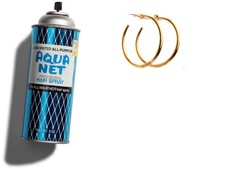
In an article on the history of the chola, Barbara Calderón-Douglass quotes the chola model Hellabreezy:
It’s easy for young privileged girls to want to have the look, but when they are done dressing up in their ‘chola costume,’ they don’t have to go back home to the hood and deal with discrimination, violence and poverty… We can’t just brush the Aquanet off our hair, take our hoops off, and go back to normal suburban life like they can because this is our reality. We live this every day.
The reality I lived every day was that normal suburban life, at least in that it was not studded with tough decisions that had lifelong consequences. I had never met real-life gangsters; I’d never known a grown-up chola. I was just trying to find my place in a school whose cliques fell along rather clear racial lines. Feeling out of place as I did, as most teenagers do, only added to the confusion. I had come to view these different subcultures — punks, cholas and everyone in between — as options in a kind of all-you-can-eat teenage rebellion buffet. I’d felt free to pick and choose, to play at belonging to any of them, or all of them, or none, because at the end of the day I could wipe off the makeup and go home. Actually, at the end of the day, I had to. That’s what privilege looked like for me: no matter how many permanent markers I wrote with, I didn’t really think por vida was for life.
Not joining the fight, I realized that all I had to offer my chola friends was imitation. But the sincerest form of flattery is just a display. It is not a basis for real friendship. I’d unthinkingly assumed it would be enough, but to these girls that would seem absurd — about as absurd as complete belonging seemed to me.

When I stepped away from my friends, I lost the mirror they’d been for me and had to look at myself anew. Friendship and belonging — I admitted I had no idea what they really were. The fierceness my friends had represented, that thing I was in such hot pursuit of, remained just as opaque. The makeup, however, I understood. It was a powerful symbol. It meant I was full of shit.
I decided to quit makeup right there.
Now not wearing makeup became an effort, a ritualized trying. It was hard at first to go around with my blemishes exposed, but over the next few months I came to sense that the makeup and my other efforts to belong stemmed from a fear of being myself and going it alone, and that became more embarrassing than any physical flaw makeup could cover. And because I believed this — believed it with my own experience — I finally had some of my own truth to act on.
In some ways not much happened: I went from being a girl who didn’t wear makeup by default to a girl who didn’t wear makeup by choice. I went from not knowing which side to choose to being able to resist false choices. Subtle changes, perhaps, but the biggest ones often are. In that subtlety, though, was the origin of fierceness. Of knowing what I believe, knowing what I don’t believe, and making my own decisions even when I know I’ll be denied membership to this or that group. Doing this has shaped my identity more than anything else; for better or worse mine is one that continues to instinctively resist group identification. But this finally gave me something of an answer to my question. Wouldn’t a bare-faced female who doesn’t give a shit about makeup and fitting in be the fiercest of all?
The answer, to my surprise, was always there. It is written all over on my face.